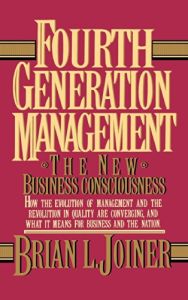Join getAbstract to access the summary!

Join getAbstract to access the summary!
Brian L. Joiner
Fourth Generation Management
The New Business Consciousness
McGraw-Hill, 1994
What's inside?
What will replace managing-by-objectives? Managing by outcome, and here is how it is done, with a focus on customers, quality, and fixing systems not just products.
Recommendation
To survive in today’s business environment, it’s not enough to just keep improving – you have to do it faster than the other guy does. Brian L. Joiner provides valuable direction in how to get better faster. This approach transcends goal-based management by focusing on the needs of the customer. Only then do apparent contradictions between customer service and cost-cutting become manageable again. The author admits that the teachings of management guru W. Edwards Deming heavily influences his advice. getAbstract recommends this very helpful work to managers searching for a more enlightened, more effective approach. It will be particularly useful for those who need a strong rationale to do what they already think is right.
Summary
About the Author
Dr. Brian L. Joiner studied management practices for many years. A graduate of the University of Tennessee and Rutgers, he began as a statistician working in quality management. He spent eight years with the U.S. National Bureau of Standards. In 1963, he met W. Edwards Deming, the management innovator who so effectively taught the Japanese about quality. Deming influenced all of Joiner’s subsequent work. Joiner and other experts worked ten years at the University of Wisconsin-Madison, to find way to use statistical principles to improve management. He worked extensively with Japanese quality experts, including Professor Noriaki Kano.
















Comment on this summary